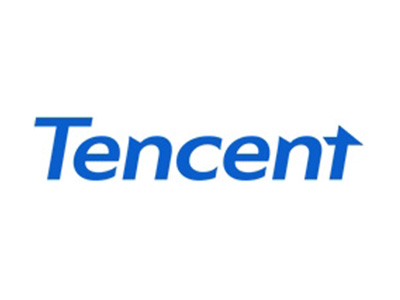腾讯控股(00700.HK)2025年第一季度业绩电话会
文章语言:
简
繁
EN
Share
Minutes
原文
会议摘要
Tencent reported a 13% year-on-year increase in total revenue to 180 billion RMB, with a 20% rise in gross profit. The company highlighted significant investments in AI, contributing to improved performance in advertising, evergreen games, and cloud services. Key segments including communication, social networks, digital content, and games showed robust growth, with particular emphasis on the integration of AI to enhance user engagement and revenue generation. Tencent anticipates long-term value creation from AI investments, expecting substantial returns despite initial cost implications.
会议速览
The webinar, hosted by Wendy Huang from the 10 cent IR team on May 15, 2025, outlines participation rules and highlights forward-looking statements, non-IFRS financial measures, and the management team's presentation including an overview by Chairman CEO, business review by President and Chief Strategy Officer, and financial discussion by CFO.
The company reported a 13% year-on-year increase in total revenue to 180 billion RMB, with a 22% rise in non-IFRS net profit to 61 billion RMB. Significant growth is attributed to high-quality revenue streams and AI investments, including new applications like yuanba, expected to generate substantial long-term returns.
In Q1 2025, Tencent reported a 13% year-on-year increase in total revenue, with notable growth in social networks, domestic and international games, marketing services, and FinTech. The company emphasized reinvestment in AI opportunities, including capital and operating expenses for GPU and AI projects, expecting temporary offsets to operating leverage but long-term value creation.
In Q1 2025, value added services revenue reached 92 billion RMB, up 17% YoY, with social networks revenue increasing 7% YoY to 33 billion RMB. Music subscriptions saw a 17% YoY revenue growth with 123 million subscribers. Long form video subscription revenue remained stable while video subscribers grew 1% YoY to 117 million. Domestic games revenue surged 24% YoY, driven by flagship games and new releases, and international games revenue rose 23% YoY.
The Wen platform has implemented upgrades to strengthen its content ecosystem, including simplifying live streaming setup, enhancing recommendation algorithms, and introducing AI features for content creation and interaction.
Tencent reports significant growth in revenue from flagship games like Honor of Kings and Peacekeeper Elite, alongside increases in marketing services and FinTech and business services segments. Notable performances include record-high gross receipts for Crossfire Mobile and Valor, and strong user engagement in Delta Force and PUBG Mobile. AI upgrades and enhanced ad platforms contribute to higher user engagement and revenue across major advertiser categories.
In Q1 2025, total revenue reached 180 billion renminbi, up 13% YoY, with gross profit increasing 20% to 100.5 billion renminbi. Operating profit rose 10% to 57.6 billion renminbi, while interest income fell 12% due to lower yields. Scores jumped 37% YoY to 3.9 billion renminbi, influenced by foreign exchange shifts. Share of profit from associates and joint ventures doubled to 4.6 billion renminbi. Net profit attributable to equity holders grew 22% to 61.3 billion renminbi, and diluted EPS increased 25% to 6.58 renminbi, boosted by share buybacks.
In Q1 2025, the company experienced growth in operating and net profits, with a focus on AI native applications and higher margin revenues from domestic games, marketing services, and FinTech. Operating expenses increased due to promotional efforts and staff costs, while operating margin improved. Notably, operating CapEx surged by 300% year-on-year, primarily for AI capabilities enhancement, leading to a 9% decline in free cash flow year-on-year.
The discussion focuses on WeChat's approach to AI, highlighting differentiation through its ecosystem and various business models including advertising, transactions, GPU rental, and subscriptions. Additionally, it addresses recent organizational adjustments in e-commerce, emphasizing the unique synergies within the WeChat ecosystem and strategies for live streaming platforms and upcoming campaigns.
On May 15, 2025, participants discuss logistics including question limits and confirm meal arrangements during a conference call.
The discussion focuses on the early stages of yuanbao integration within the ecosystem, highlighting increasing user interaction and content direction for summarization and analysis. Experiments linking various ecosystem components are ongoing, with expectations for more systematic integration in future quarters.
During a discussion on May 15, 2025, a participant emphasizes the focus on generating demand for technology, suggesting managing GPU capacity and investment pace will be addressed once high demand becomes a challenge.
A discussion highlights Tencent's robust domestic gaming quarter, exploring if this signifies a catch-up demand or structural growth facilitated by AI and content release cycles. It also delves into the evolving global regulatory landscape affecting app store economics and value distribution in the video game sector, particularly in China.
The speaker discusses Tencent's strong domestic game revenue growth in Q1 2025, attributing it to strategic changes, AI utilization, and alignment with audience preferences shifting towards first-person action games. They also address the evolving economics of app stores, predicting a global shift towards more equitable relationships between digital content providers and app stores.
Over the past 2 to 3 months, Tencent has observed increasing user interaction with AI agents across various business applications, noting a discovery process in determining which AI functionalities resonate most with users and enhance user value and potential monetization. While it's early for systematic analysis, users are showing growing affinity and engagement with AI-enhanced features, indicating potential for improved user experience and monetization, including in mid-tier games.
As of May 15, 2025, the primary focus is deploying game AI in competitive multiplayer games, with potential future applications in content-driven games, including facilitated content creation and dynamic environment generation.
The company addresses the effects of recent US licensing restrictions on high-end GPUs, detailing strategies to manage AI development and inference needs amidst the challenges. Additionally, they discuss the steady growth and improved credit quality in their consumer loan facilitation business, attributing part of the success to consumers' increased savings balances, and outline a measured approach for future expansion.
The discussion focuses on the company's strategy to reinvest in AI, elaborating on the impact on the gap between revenue and operating profit, expected expense items beyond CapEx, and the structural growth in the domestic game business, particularly in the first-person shooter genre.
The dialogue discusses Tencent's approach to narrowing the gap between profit and revenue growth through AI deployment, with a focus on managing costs and headcount. It also highlights the increasing popularity of first person action games in China, driven by younger gamers and new gameplay modalities, indicating a convergence with global gaming trends.
The discussion explores the significant role AI technology plays in enhancing advertising revenue through improved click-through rates and user engagement. It also addresses the evolving landscape of search queries, highlighting the integration of AI in search features and its potential to attract more user and revenue share.
The company experienced a notable increase in advertising revenue growth, attributed to factors other than inventory release, with a focus on long-term sustainability. Meanwhile, inquiries highlight user engagement and future prospects for AI chatbot applications, emphasizing ongoing efforts in AI product innovation and user experience optimization.
The dialogue highlights strategies focusing on leveraging AI and optimizing traffic to extend the growth runway for the advertising business. Key points include improving ad tech, enhancing user engagement through personalized content, and building a robust transaction ecosystem to increase advertiser value and revenue growth.
The company has significantly grown its Yuanbao user base and focuses on retention through enhanced experiences. The next stages involve adding functionalities to improve user activation and attraction, customizing product form factors, leveraging their unique ecosystem, and continuously upgrading the Hu Yuan model for differentiation.
Discussion focuses on the long-term eCommerce strategy for WeChat, emphasizing initiatives over specific KPIs, and queries about payment volume declines, attributing improvements to macro factors and payment strategies.
The primary focus is on enhancing the shopping experience for consumers with higher quality products, convenient return policies, good customer service, and competitive pricing. Additionally, the strategy includes attracting more high-quality brands and motivated merchants to the ecosystem and increasing traffic to merchants through live broadcasts and leveraging mini programs within the ecosystem. Long-term growth initiatives involve connecting users to products uniquely through various modules and social components, aiming to magnify transactions and boost merchant sales. Despite market fluctuations, there's strong growth in mini-shop transaction volume, with hopes for sustained consumer confidence and consumption activity.
The webinar discussed increasing transactions and decreasing prices, attributing this to supply-side competition and recovering consumption patterns. The impact of tariffs and potential government stimulus on the economy were highlighted as key factors to watch.
要点回答
Q:What is the growth trajectory of the company's high-quality revenue streams?
A:The high-quality revenue streams have sustained a solid growth trajectory.
Q:What is the year on year change in digital content subscription groups?
A:Digital content subscription groups, including Tencent Video and TME, both experienced year on year growth.
Q:What are the components of the company's total revenue and how much did it grow year on year?
A:The total revenue was 180 billion RMB, up 13% year on year.
Q:What is Tencent's position in the cloud audio and video solutions market in China?
A:Tencent Cloud audio and video solutions have ranked first in China for consecutive years.
Q:How has the company's investment in AI impacted its revenue streams?
A:The company's investment in AI is aimed at generating revenue through improved ad targeting, content recommendation, Evergreen game performance, and cloud solutions. However, there is a temporary lag between investment costs and the onset of significant revenue generation from these investments.
Q:What are the year on year changes in domestic and international games revenue?
A:Domestic games revenue grew by 24% year on year, driven by flagship games and recently released games. International games also grew year on year.
Q:What is the year on year change in social networks revenue?
A:Social networks revenue was up 7% year on year to 33 billion RMB.
Q:What is the year on year change in long form video subscription revenue?
A:Long form video subscription revenue was flat in the year, with video subscribers growing 1% year on year to 117 million.
Q:How did the company's marketing services revenue grow year on year?
A:Marketing services revenue grew 20% year on year to 32 billion renminbi, supported by higher user engagement and AI upgrades to the ad platform.
Q:What is the year on year change in business services revenue within the FinTech segment?
A:FinTech and business services segment revenue was 55 billion renminbi, up 5% year on year, with FinTech services revenue growing by a low single-digit percentage and business services revenue returning to a teens year-on-year growth rate.
Q:What are the key financial figures for the first quarter of 2025?
A:For the first quarter of 2025, total revenue was 180 billion renminbi, gross profit was 100.5 billion renminbi, operating profit was 57.6 billion renminbi, and net profit attributable to equity holders was 61.3 billion renminbi.
Q:How did stock-based compensation expenses affect non-IFRS operating profit and net profit?
A:Non-IFRS operating profit and net profit were impacted by a one-time stock-based compensation expense of 1.3 billion renminbi related to the restructuring of an existing commercial arrangement at an overseas subsidiary, which was not included in the calculation of non-IFRS operating profit and net profit.
Q:What are the strategic considerations and expectations for AI in various business models such as advertising, transactions, and subscriptions?
A:Strategic considerations include the direct augmentation of AI in advertising to improve targeting capabilities and deliver better results, translating into additional advertising revenue. There is also an expectation that transaction revenue will be closely tied to and drive growth in advertising revenue. GPU rental is considered a lower priority, especially with the short supply of GPUs, and the subscription model is not expected to be the mainstream business model for AI in China.
Q:What was the impact of organizational changes on the company's structure and operations?
A:The latest organizational adjustment led to the e-commerce team becoming an independent department from its incubation within the open platform department. However, it is still managed by the same manager, indicating a minor change with no significant operational impact.
Q:How is the integration of the yuanbao ecosystem progressing, and what are the expected synergies and future steps?
A:The integration of the yuanbao ecosystem is in an early development stage. Initial user behaviors include using the platform for question and dialogue, and content directed to the ecosystem. More linkage between the Asian ecosystem and the Rambo chat companion is expected, with plans for systematic reporting on experiments in a few more quarters.
Q:What is Tencent's approach to managing investment and revenue growth in the face of potential demand for GPUs?
A:At this stage, Tencent aims to generate demand aggressively. If there is excessive demand that GPUs cannot handle, the company will consider how to accommodate it. Currently, the focus is not on revenue runway but on demand generation.
Q:What are the longer-term implications of the strong performance in domestic games, and how should one interpret the catch-up demand versus structural growth factors?
A:The strong performance in domestic games can be attributed to factors such as concentration of consumer attention on key global games, faster content release cycles with AI, and recent regulatory interventions affecting the economics between app stores and apps. Tencent has been focusing on these aspects and is optimistic about future revenue growth for both domestic and international games, attributing it partly to the changes made in operations and strategies for major domestic games.
Q:What is Tencent's perspective on the evolving economics of app stores?
A:Tencent views the current app store economics as changing, which previously favored physical product providers at the expense of digital content creators. The company believes there will be a reset towards a more equitable relationship where digital content providers retain a fairer share of the end-user spend.
Q:What has Tencent observed regarding user behavior changes post-integrating AI into its business applications?
A:It's too early for systematic analysis, but Tencent is creating functionalities and user experiences that leverage AI, and users are showing increasing usage and interaction with their AI agents as they develop affinity for them.
Q:How is Tencent deploying game AI in competitive multiplayer games and what are the prospects for generative AI?
A:Tencent is at the early stage of deploying game AI in competitive multiplayer games and sees the biggest opportunity there. There is also a separate opportunity to deploy generative AI into more content-driven games, which may facilitate faster content creation by the studio and user-generated content in the future.
Q:What is Tencent's stance on high-end GPUs and their impact on capital expenditure, AI development, and product launches?
A:Tencent faces a dynamic situation regarding high-end GPUs due to recent licensing requirements and bans. They have a strong inventory of chips acquired previously, which will be used for AI strategy execution. GPUs will be allocated based on applications that generate immediate returns, such as advertising and content recommendation. For training large language models, existing inventory should suffice for a few more generations. On the inference side, the company plans to optimize software efficiency and tailor model sizes to use resources effectively.
Q:How has Tencent's loan facilitation business been performing and what is the potential growth outlook?
A:The credit quality for loans facilitated through Tencent's platform has been improving consistently. The company attributes this to better borrower selection and macroeconomic development. Tencent is enabling the facilitated loan book to grow in a measured way. Compared to the loan book facilitated by the company's largest peers, Tencent's current size is a fraction of theirs. The company expects a long runway for continued growth in high-margin loan facilitation revenues.
Q:What are Tencent's plans for reinvesting into AI and what kind of expenses should be expected?
A:While details on the magnitude and extent of the reinvestment into AI were not explicitly mentioned, Tencent has a focus on continuing to invest in AI, which could involve various expense items beyond CapEx. Specific expectations on the type and extent of expenses were not provided in the transcript.
Q:Is there a structural change in Tencent's approach to first-person action games?
A:There is an implication that Tencent is experiencing a structural change in its approach to first-person action games as they are seeing success and growth across various games within that vertical, suggesting an evergreen status for multiple games in this category.
Q:What is the expected duration between investing in new products and monetizing them?
A:The duration between investing in cultivating a new product and monetizing it typically ranges from one to two years.
Q:How does Tencent plan to manage its CapEx and operating leverage?
A:Tencent plans to manage its CapEx closely and avoid negative operating leverage, with CapEx and depreciation being the most important factors for revenue growth.
Q:What is Tencent's view on the popularity of first-person action games in China?
A:Tencent observes that the popularity of first-person action games in China is increasing, driven by younger gamers, and sees this as converging with global gamer behavior. These games represent a significant portion of gaming time and revenue globally and are particularly popular among the 20 to 30 year old demographic in China.
Q:What is Tencent's perspective on the impact of AI on user search behavior?
A:Tencent acknowledges that AI search is still in early days and the boundaries between AI search experiences and traditional search are blending together. The company views its new AI search capabilities as an opportunity to build user share and revenue share within the search industry.
Q:How is Tencent's advertising business benefiting from AI technology?
A:AI technology is boosting advertising revenue through improved click-through rates on ads, targeting more appealing content to users, and potentially expanding the audience within the video account ecosystem. However, the upper limit of these benefits is not definitively known and may vary based on various factors.
Q:What is Tencent's strategy for managing advertising revenue growth?
A:Tencent aims to preserve a sustainable advertising revenue growth band over many years rather than focusing on short-term, high growth rates. The company may be cautious about increasing the ad load and prioritize user time spent and experience, deploying AI technology against new products without overemphasizing quarterly fluctuations in revenue growth.
Q:What is the strategy to improve the product experience and how does it relate to the advertising business?
A:The strategy to improve the product experience includes reducing advertising to make the product experience better, which is seen as a competitive advantage. This forms a virtuous cycle where stronger transaction ecosystems within the platform lead to higher click-through rates, increasing the propensity for advertisers to spend and the value of each click. The company is continuously working to extend the runway of its advertising business by building stronger ecosystems and increasing transaction opportunities.
Q:What is the significance of the recent growth in the user base and user retention?
A:The recent growth in the user base and the emphasis on user retention are significant because they demonstrate the company's ability to provide a good user experience, resulting in users returning and using the platform, such as 'Yuanbao,' more frequently. User retention is a critical component of the company's strategy to ensure long-term growth and profitability.
Q:How does the company plan to enhance its AI product in the next stage of development?
A:The next stage of development for the AI product entails adding more functionalities to help retain and activate users better and attract new users. The company plans to leverage its unique ecosystem, including social, content, and mini programs, to provide a differentiated offering in the market. Additionally, the company will continue to upgrade its 'Hu Yuan' model to reinforce its dual model strategy.
Q:What are the priorities in the WeChat eCommerce strategy, and what is the approach to measuring success?
A:The priorities in the WeChat eCommerce strategy include improving the basic shopping experience for consumers, increasing the supply of good products and brands, and driving more traffic to merchants for better interaction between consumers and products. The company does not focus on setting short-term, descriptive KPIs but aims for a long-term project with a long runway to ensure sustainable growth. Instead, the company has a number of initiatives in place to improve the shopping experience and attract more merchants and quality products.
Q:What is the potential impact of the tariffs on consumer spending and transactions?
A:The potential impact of tariffs on consumer spending and transactions is uncertain. There's an expectation that the interaction with tariffs could influence the next quarter's data, and the influence is dynamic and still unfolding. While consumption patterns have bottomed out and started to slowly recover, the full effect of tariffs is not yet clear, especially considering the supportive government stimulus. The interplay of tariffs and government stimulus will be key factors to watch in assessing the impact on the economy.

TENCENT
Follow





